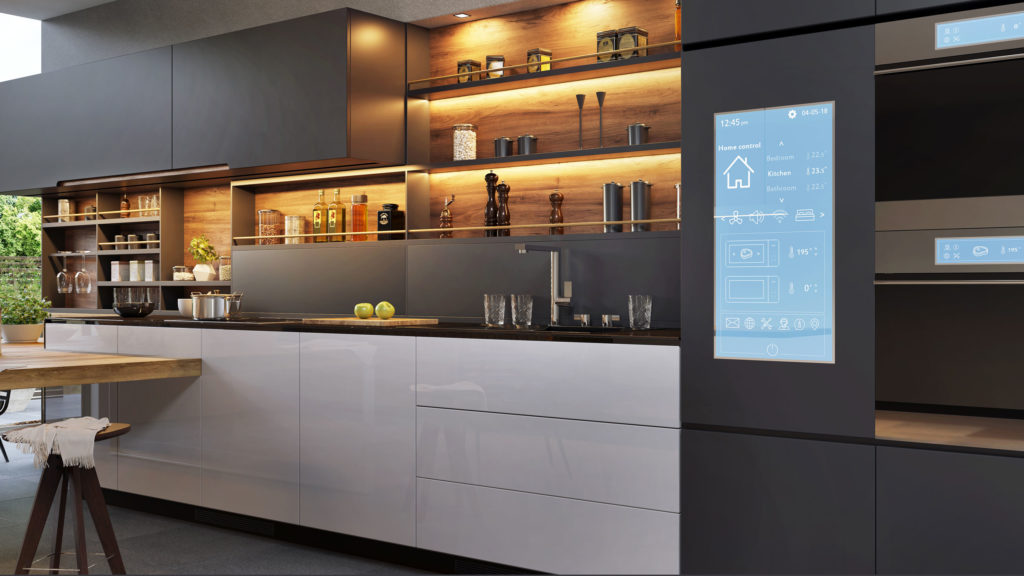When I asked my echo dot, ‘what is a smart home?’ Alexa replied, “Smart home devices are connected to your WiFi and can be controlled with apps or automated. I can control some devices like light bulbs and switches.”
Not quite the explanation I was seeking. She also couldn’t tell me if I actually owned a smart home.
What is a smart home?
The definition seems to vary depending on who you ask. Most agree that it is a house which consists of more than one smart appliance. These appliances are specialised equipment that run from a centralised hub or system.
Smart appliances connect and communicate with one another, enabling the automation of tasks such as keyless door entry. What constitutes the number of smart appliances necessary to make up a smart home, however, is continually contested.
The Eco Experts, a comparative website for environmental tech products, state that a smart home needs a minimum of two devices. It offers the examples of a smart bulb and smart plug. By this thinking, it estimates that there are 2.2 million smart homes in Britain. For others, a smart home needs just one smart device to control appliances, suggesting that there’s at least 15 million of these homes across the UK.
Hardware Pioneers spoke to Simon Johnson, UK sales manager at EnOcean, an energy-harvesting wireless company whose modules deliver data for the IoT. He wants to dispel the notion that owning a smart speaker is synonymous with owning a smart home.
Simon said: “Fundamentally, we need to get away from people thinking they’ve got a nest because they’ve got an Amazon Alexa, they’ve got a smart home – they haven’t! They’ve got a tiny number of components that create a smart home.”
Clearly, a home with more smart components will offer greater intelligent capabilities. Instead of asking ‘what is a smart home?’, perhaps we should question ‘how smart is your home?’.
Are smart homes just a frivolous luxury?
A smart home’s routine can range from tasks as simple as heating your kettle through voice control, to the automation of lights.
For some, making these menial tasks autonomous is a convenience that they are willing to splash cash out for. Over time, most of us have given in to additional technological costs to ease and assist our lives, often in trivial ways. Consider the popularity of smart watches, which have taken the world by storm. Admittedly, they offer features that a phone does not, such as heart rate monitoring, water-proof casing, and greater portability. Yet to the vast majority of customers, these differentiating qualities are not even utilised.
Smart homes, however, can offer more than just extra time and convenience to a busy day. In the UK, the cost of automating an entire house averages between £5,000 – £15,000. Despite being a hefty investment, this may well save far more in the long run.
One feature is a smart thermostat, increasingly popular amongst people who may be environmentally conscious or mindful of the need for energy efficiency. Smart heating devices such as this can help combat climate change, with estimations that its adoption could reduce CO2 emissions by over 54,000 tons a year in Milan alone.
It’s not only ecological benefits that make smart appliances attractive. There are also monetary incentives. With the reduction of CO2 emissions it also predicted that Milan would see an annual saving of €70m (£59m[1]). If this is for a city comprised of just over three million people, imagine the potential of such applications in London, whose population is estimated at almost nine and a half million.
With newer builds comes newer technology which in turn is more energy efficient. For anybody worried about the operational cost of a smart home, they ought to know that houses built after 2000 are, on average, 30% larger but tend to use only two percent more energy than older homes. Likewise, the installation of technologies such as a smart hub into your house can save energy and money.
Smart hubs can control all connected appliances, and rather than leaving devices in ‘idle’ mode, they can switch them off altogether when no one is home. They can also programme dishwashers or washing machines to run their cycles during off-peak hours when electricity costs less due to smaller overall demand across the grid.
What’s next?
This brief introduction is a beginner’s guide to smart homes. We know what they’re offering right now. This includes features such as electric blinds and motorised television.
Yet, our generation tends to fixate on the future. How will smart homes blow up? What features should we look out for? Will they become more affordable and in turn more universally utilised?
Watch this space! Keep your eyes peeled on our Hardware Pioneers blog for industry’s insight into the future of smart homes.
[1] 15/10/21
